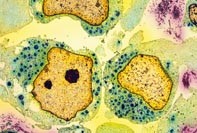Peer Reviewed
Feature Article Urology
A potentially curable disease: optimising testis cancer treatment
Abstract
Modern treatment and management of testis cancer means that survival rates for patients with early disease approach 100%, and at least 70% for those with advanced disease. Although survival rates are relatively high, patients and their families will need counselling through all stages of diagnosis and treatment.
Key Points
- Patients with testis cancer usually present with a painless, hard, swollen mass in the testis.
- Initial investigations comprise testicular ultrasonography and assessment of the tumour markers -human chorionic gonadotropin and alfa-fetoprotein (AFP).
- Once testis cancer has been diagnosed patients should be referred to a urologist for staging investigations and surgical orchidectomy (via inguinal approach).
- After orchidectomy, patients with stage 1 nonseminomatous tumours usually undergo surveillance, whereas those with stage 1 seminomas usually undergo a discussion about options including adjuvant radiotherapy, or surveillance or single course of intravenous chemotherapy as alternatives in selected patients.
- The use of cisplatin has revolutionised the treatment of metastatic testis cancer.
- Survival rates for patients with early disease approach 100% and for those with advanced disease range from 70 to 95%.
Purchase the PDF version of this article
Already a subscriber? Login here.

